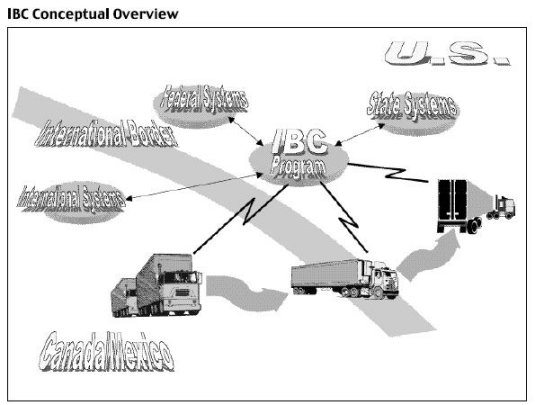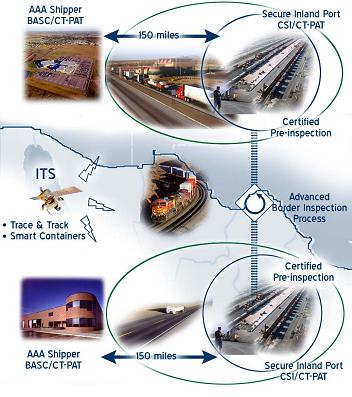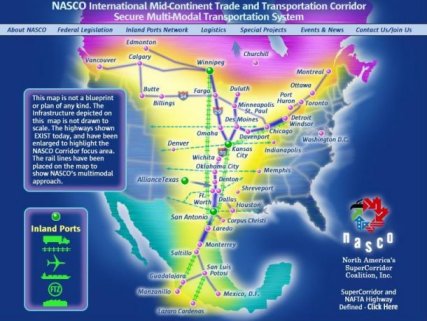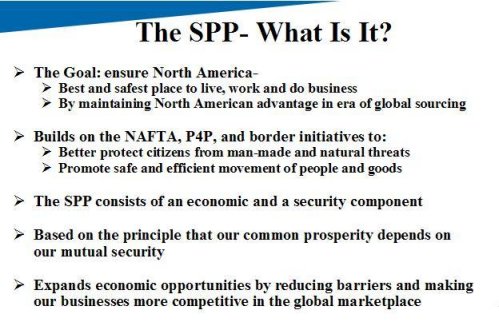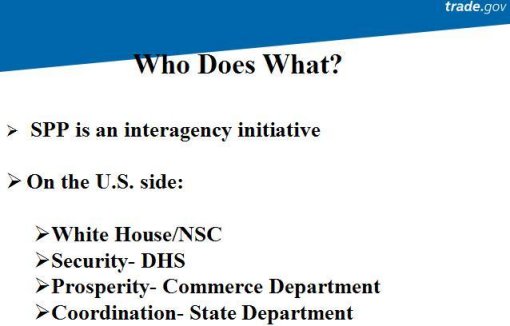Dispelling the Myth of the
Urban Legend
On August 10, 2005, the President signed into law the Safe, Accountable, Flexible, Efficient Transportation Equity Act: A Legacy for Users (SAFETEA-LU). With guaranteed funding for highways, highway safety, and public transportation totaling $244.1 billion, SAFETEA-LU represents the largest surface transportation investment in our Nation's history. The two landmark bills that brought surface transportation into the 21st century—the Intermodal Surface Transportation Efficiency Act of 1991 (ISTEA) and the Transportation Equity Act for the 21st Century (TEA-21)—shaped the highway program to meet the Nation's changing transportation needs. SAFETEA-LU builds on this firm foundation, supplying the funds and refining the programmatic framework for investments needed to maintain and grow our vital transportation infrastructure.
The 'TEA' is a little joke. This transportation system is for China... get it? TEA...China...Tea? (These psychopaths love their little jokes)
What is Intermodal?
Intermodal: being or involving transportation by
more than one form of carrier during a single journey.
(i.e. trains, planes, trucks and automobiles)
The Intermodal Surface Transportation Efficiency Act of 1991 (ISTEA)
The purpose of the Act is clearly enunciated in
its statement
of policy:
"to develop a National Intermodal
Transportation System that
is economically efficient, environmentally
sound, provides the
foundation for the Nation to compete in the
global economy and
will move people and goods in an energy
efficient manner"
The provisions of the Act reflect these
important policy goals. Some of the major features include:
A National Highway System (NHS), consisting primarily of existing Interstate routes and a portion of the Primary System, is established to focus Federal resources on roads that are the most important to interstate travel and national defense, roads that connect with other modes of transportation, and are essential for international commerce.
New technologies, such as intelligent vehicle highway systems and prototype magnetic levitation systems, are funded to push the Nation forward into thinking of new approaches in providing 21st Century transportation.
The private sector is tapped as a source for funding transportation improvements. Restrictions on the use of Federal funds for toll roads have been relaxed and private entities may even own such facilities.
The Act continues discretionary and formula funds for mass transit.
Highway funds are available for activities that enhance the environment, such as wetland banking, mitigation of damage to wildlife habitat, historic sites, activities that contribute to meeting air quality standards, a wide range of bicycle and pedestrian projects, and highway beautification.
Highway safety is further enhanced by a new program to encourage the use of safety belts and motorcycle helmets.
State uniformity in vehicle registration and fuel tax reporting is required. This will ease the recordkeeping and reporting burden on businesses and contribute substantially to increased productivity of the truck and bus industry.
Intermodal Transportation
The purpose of Title V is to promote intermodal transportation.
The focus of the intermodal effort will be a new Office of Intermodalism, established within the Office of the Secretary of Transportation. The office will maintain and disseminate intermodal transportation data, and coordinate Federal research on intermodal transportation.
The Secretary is authorized to make available $3 million in grants to States to develop model intermodal transportation plans. These plans must include systems for collecting data.
The Act establishes a National Commission on Intermodal Transportation to study the status of intermodal standardization, intermodal impacts on public works infrastructure, legal impediments to efficient intermodal transportation, financial issues, new technologies, problems in documenting intermodal transfers of freight, research and development needs, and the relationship of intermodal transportation to productivity. The report is due to Congress by September 30, 1993.
The design for the "Intelligent Transportation Systems at International Borders", April 2001.
The International Border Clearance (IBC) program was initiated under the provisions of the Intermodal Surface Transportation Efficiency Act (ISTEA) of 1991.
The program was originally conceived as a means to test the feasibility of utilizing Intelligent Transportation Systems (ITS) technologies at border crossings to facilitate trade and transportation safety, and expedite the processing of commercial vehicles through ports of entry in states along international borders. In support of a Vice Presidential initiative to develop an international trade processing system, the IBC program was expanded to provide a means to help the U.S. Treasury address requirements for improved trade statistics and more effective import/export processing.
The IBC program directs and coordinates the deployment of ITS technologies at international border crossing sites for the facilitation of trade and the enhancement of commercial vehicle safety.
The IBC program is comprised of:
(1) Technology deployments at select border crossing sites
(2) Interfaces with existing and planned federal and state safety and trade processing systems
(3) Partnerships with U.S., Canada, and Mexico transportation, customs and immigration agencies; and
(4) Liaison with private sector stakeholders involved with international border crossing facilities and activities.
NAIPN - Technical Diagram
Planned shipping route - and it should be obvious - but stating it anyway, American Ports and American Truckers will be put out of business by this transportation system for imported goods from COMMUNIST China.
Asia-Pacific
Gateway
Trans-Texas
Corridor
xxxxxxxxxxxxxxxxxxxxxxxxxxxxxxxxxx
"The administration is not engaged in a secret plan to create a 'NAFTA super highway,'" asserts Cheney in a recent letter to a constituent, according to a copy of the message obtained by WND.
As WND previously reported, Jeffrey Shane, undersecretary of transportation for policy at the U.S. Department of Transportation got into a spirited exchange in January with congressmen after he asserted to a House subcommittee that NAFTA Superhighways were an "urban legend."
In response to questioning by Rep. Ted Poe, R-Texas, before the Subcommittee on Highways and Transit of the U.S. House of Representatives Committee on Transportation and Infrastructure, Shane asserted he was "not familiar with any plan at all, related to NAFTA or cross-border traffic."
* * * * *
Well. Well... What do you know. Mr. Shane was working in the Office of Intermodalism before his appointment to Under Secretary of Transportation Policy - Office of Intermodalism. (Note the name of the 1991 legislation).
The President intends to
nominate Jeffrey Shane of the District of Columbia, to be
Under Secretary of Transportation for Policy. Mr. Shane is
currently the Associate Deputy Secretary of Transportation
at the Department of Transportation. In this capacity, he
serves as the Secretary of Transportation's principal policy
advisor and as the Director of the Department's Office of
Intermodalism. Prior to his appointment at the Department of
Transportation in March of 2002,
he was a partner at the
international law firm of Hogan & Hartson L.L.P. Earlier in
his career, he has served both as Deputy Assistant Secretary
and Assistant Secretary for Policy and International Affairs
at the Department of Transportation. He also has served as
the Chairman of the Commission on Air Transport of the
International Chamber of Commerce and as Chairman of the
Military Airlift Committee of the National Defense
Transportation Association. He is a graduate of Princeton
University and earned his law degree from Columbia
University.
* * * * *
The [IBC] program was originally conceived as a means to test the feasibility of utilizing Intelligent Transportation Systems (ITS) technologies at border crossings to facilitate trade and transportation safety
The reason they say it was originally conceived as a test is because in the 1991 'The Intermodal Surface Transportation Efficiency Act of 1991', they included the funding for the development of the computer systems under the heading of 'Research'
TRANSIT PLANNING AND RESEARCH PROGRAM (pg. 24)
A new comprehensive transit planning and research program is funded as a 3 percent takedown of the total amount of funding provided. A total of $944 million is authorized over 6 years...
The National Planning and Research Program includes a transit technology development program, and establishes an Industry Technical Panel to assist in identification of priority technology development areas.
The program will have an independent governing board and will be managed by the National Academy of Sciences.
By September 30, 1996,
States must join the International Registration Plan....it
also authorizes $6 million to
fund a working group
of
State and local government officials which must report in 2
years with recommendations on improving IRP and IFTA.
* * * * *
This was another "little joke". The part about:
Highway safety...safety belts and motorcycle helmets
Was really to provide funding for a study to justify standardizing state and local databases for the collection of information and the plans for connections to the federal 'smart highway' systems databases. Just scan it for the words 'computer, data, database and collection'.
This study was undertaken in response to Section 1031(b) of the Intermodal Surface Transportation Efficiency Act of 1991 (ISTEA), which required the National Highway Traffic Safety Administration (NHTSA) to conduct a study to determine the benefits of safety belt and motorcycle helmet use in crashes.
Now look at this report: "The Importance of Data Sharing" - and especially look at the data collections of the Research and Innovation Technology Administration:
National Driver Register: (needs Real ID for this -
Transborder Freight Data: The Transborder Freight Data system provides detailed North American Merchandise trade data unavailable from any other source. The data is presented by commodity type, mode of transportation (truck, rail, air, water, pipeline, mail, and other), and geographic detail (port of entry and exit, state/province of origin and destination) for U.S. exports and imports from Canada and Mexico.
Commodity Flow Survey: Sponsored by the Bureau of Transportation Statistics, the Commodity Flow Survey (CFS) collects establishment survey data on freight movement and provides data on how much freight moves by all modes of transportation in the United States, including private and for-hire trucking for both intercity and local freight transportation. The CFS is the primary source of nationwide data on the flow of goods and hazardous materials by all modes of transportation, on the geography of commodity movements and the distance of shipments. [NOTE: This data and the above would have been really helpful to Jeff Skilling (Enron) and his 'Mother of all Procurement' systems for commodities.
* * * * *
To further the interest of the industry, IANA created the Foundation for Intermodal Research and Education (FIRE).
Transportation Border Working Group - Plenery Meeting, May 2007
Security and Prosperity Partnership . gov
Wa HO! Looky here...
White House/NSC
"We Report.... You Decide"

SPP Corporate Speak
